
Works
(1957-1973) - San Donato Milanese (Milano) - ENI - SNAM, landscaping and roof gardens.
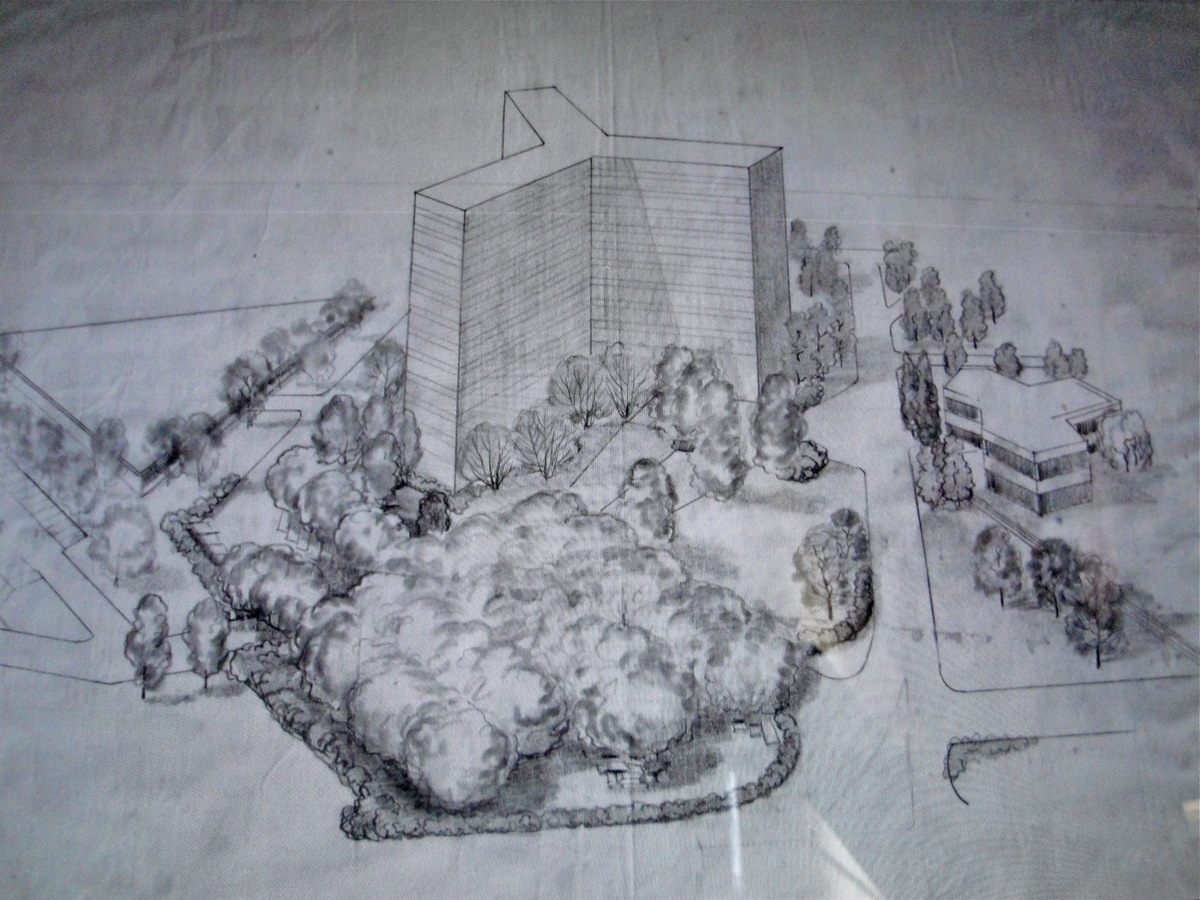
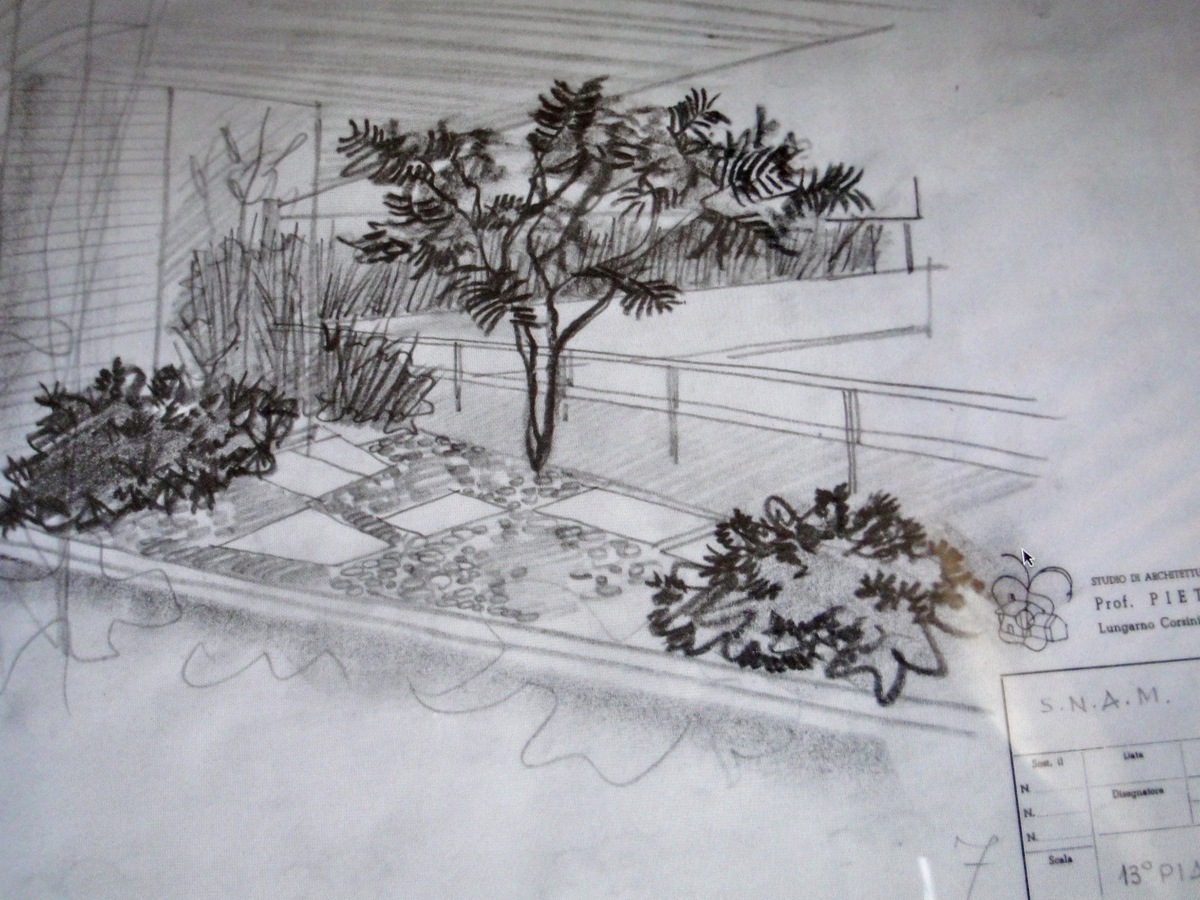
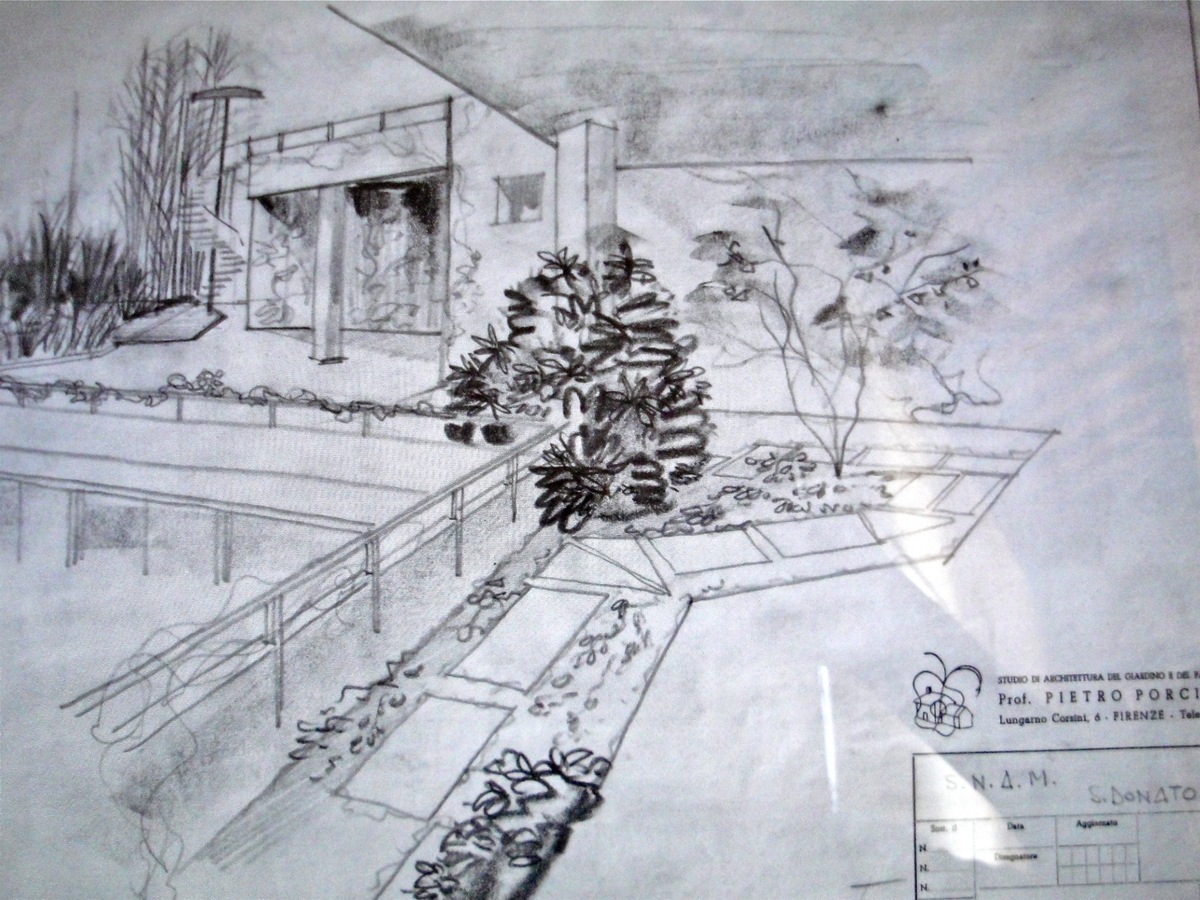
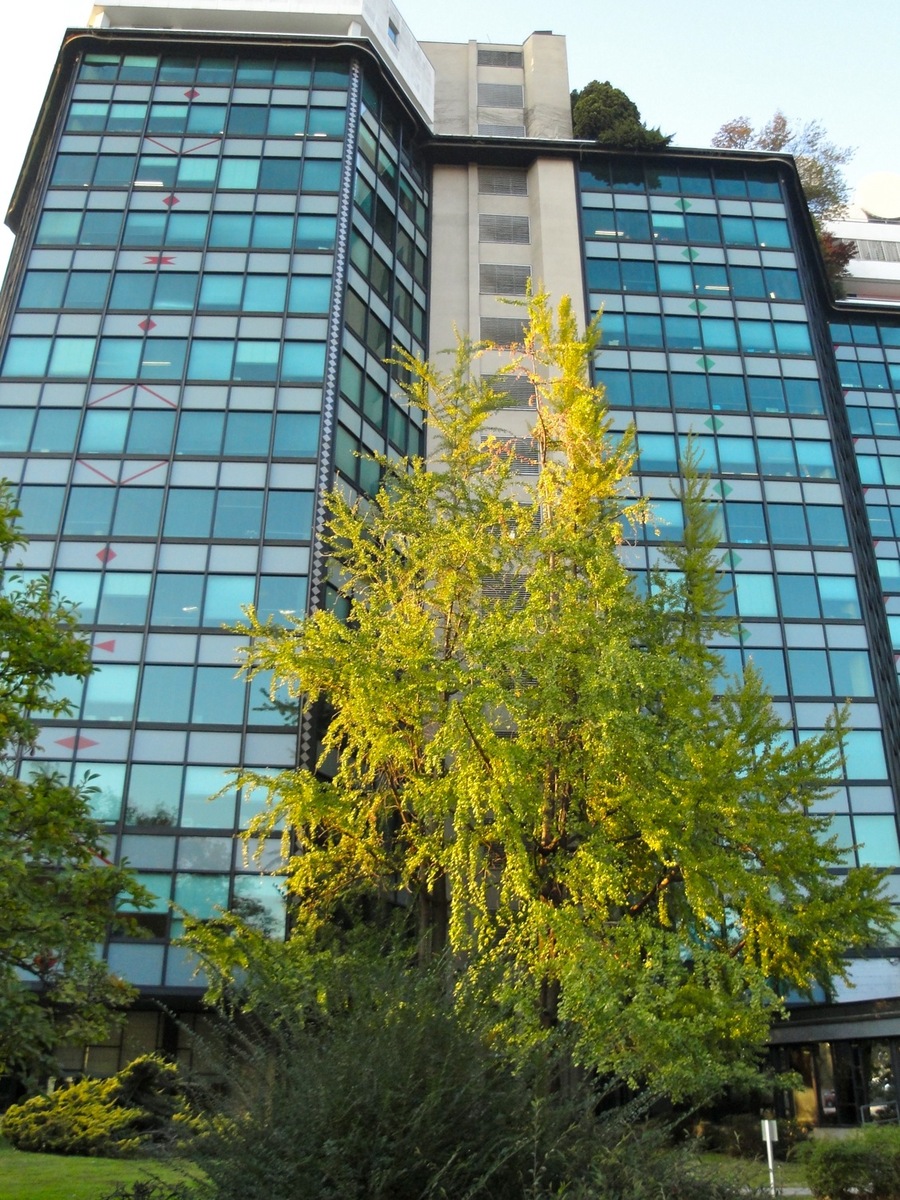
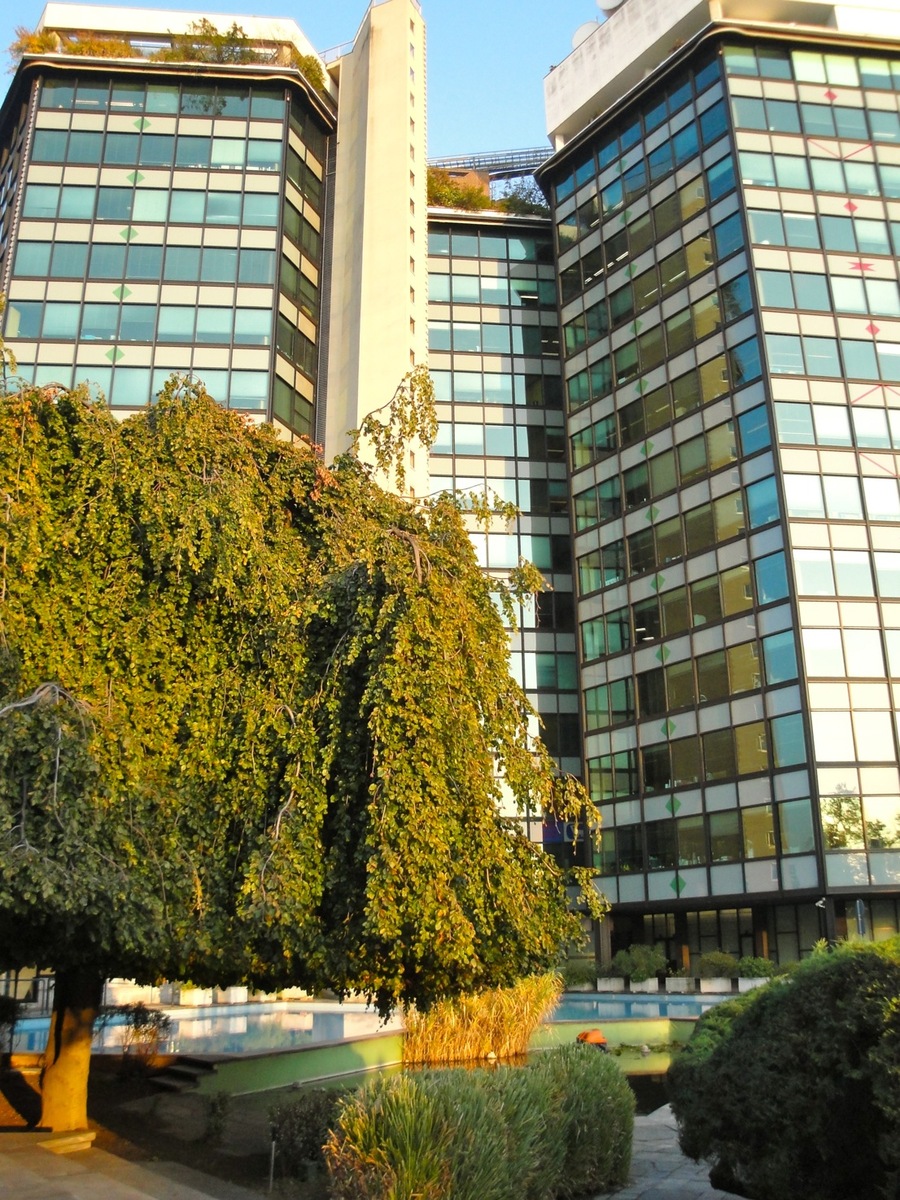
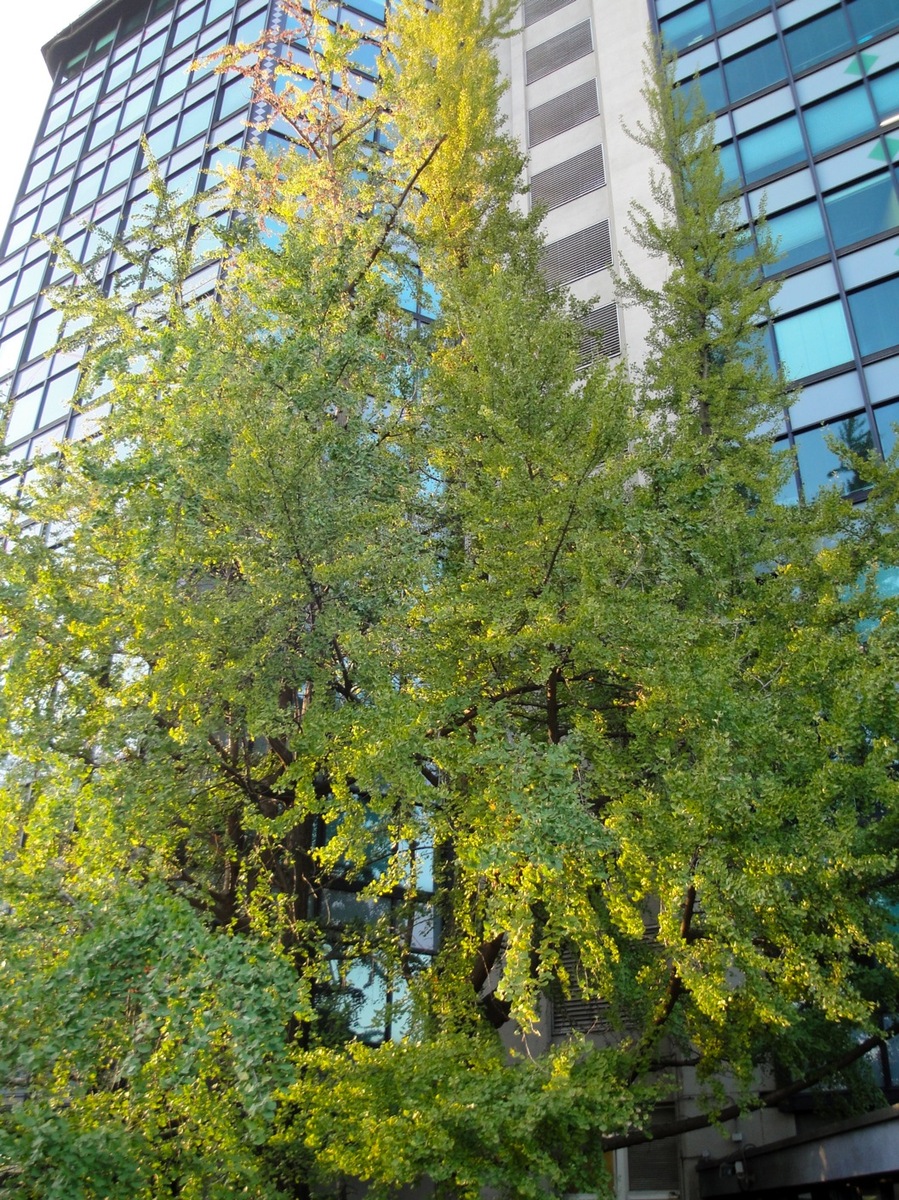
Few industrial groups in Italy have devoted special attention to achieving harmony between their plant and production areas and the landscape. In the postwar reconstruction period, two examples of this approach were OLIVETTI and ENI, and this was thanks to two great public figures – Adriano Olivetti and Enrico Mattei – who had even then grasped the importance of environmental issues and the imperative to provide territorial safeguards. Porcinai collaborated with ENI in Rome (EUR – National Headquarters), in San Donato Milanese (Metanopoli), and in Pugnochiuso (Vieste, Gargano - Centro Vacanze ENI). As had already been the case with other design experiences for industrial concerns in the period 1950-1960 (Olivetti, Barilla, Lancia, Buitoni, Perugina, etc.), the intelligent approach and farsightedness of Enrico Mattei permitted the landscape architect to shape the new Metanopoli “city of methane” and its offices with “green” projects that were futuristic for their time and that still preserve a special charm, despite all the intervening transformations.
In 1957, Enrico Mattei engaged Pietro Porcinai to consult on landscaping the areas surrounding the group’s first office building (14 stories on a hexagonal plan, designed by designer, architect, painter and advertising designer Marcello Nizzoli and designer and architect Mario Olivieri and built in 1956-1957), the housing, and the motel to valorize the image projected by the industrial group but also to create a healthy, pleasant working/living environment in which the buildings stand in harmony with the environment. In order to lend unity and personality to the whole, the landscape artist selected few species of plants. The boundary plantings are rows of large trees: planes _(Platanus orientalis)_, poplars (_Populus alba canadensis)_, lindens (_Tilia argentea)_, maples (_Acer pseudoplatanus f. atropurpurea, A. saccharinum, A. polymorphum)_, magnolias (_M. grandiflora, M. soulangeana), Liriodendum tulipifera, Salix viminalis, Cytisus laburnum_, and _Rhus typhina. Cotoneaster buxifolia, Chamaecerasus pileata_, and _Ulex europaeus bushes, hedges of Crataegus pyracantha lalandi and C. pyracantha junnanensis, and green areas planted in ground-hugging Cotoneaster dammeri, Convallaria japonica,_ etc. and lawns adorn the spaces. Porcinai also designed a water garden and roof gardens on the upper floors of the office building, employing techniques that were little known in the Italy of the time. For the green areas of the residential district, he planted poplars (_Populus pyramidalis, P. canadensis)_, plane trees, hornbeams _(Carpinus betulus)_, maples, _Celtis australis, Cercis siliquastrum, Prunus pissardi, Pawlonia imperialis, Cytisus laburnum_, and _Quercus rubra_, and edgings of _Mahonia, Cotoneaster, Crateagus, Weigelia_, etc. to delineate circular children’s play areas surrounded by strip rose-gardens and lawns. Later on (1972-73), Porcinai also worked on the green areas around the office building at Viale De Gasperi no. 16, built in 1971-1973 on a cross floor plan to designs by Studio Albini, Helg, Piva for the new Snamprogetti headquarters. The plants selected for the site were _Albizzia julibrissima, Celtis occidentalis, Acer saccaharinum, Prunus laurocerasus, Juniperus communis, Mahonia aquifolium, Bambusa nigra, B. mitis, B. nana, Spirea_, etc.


